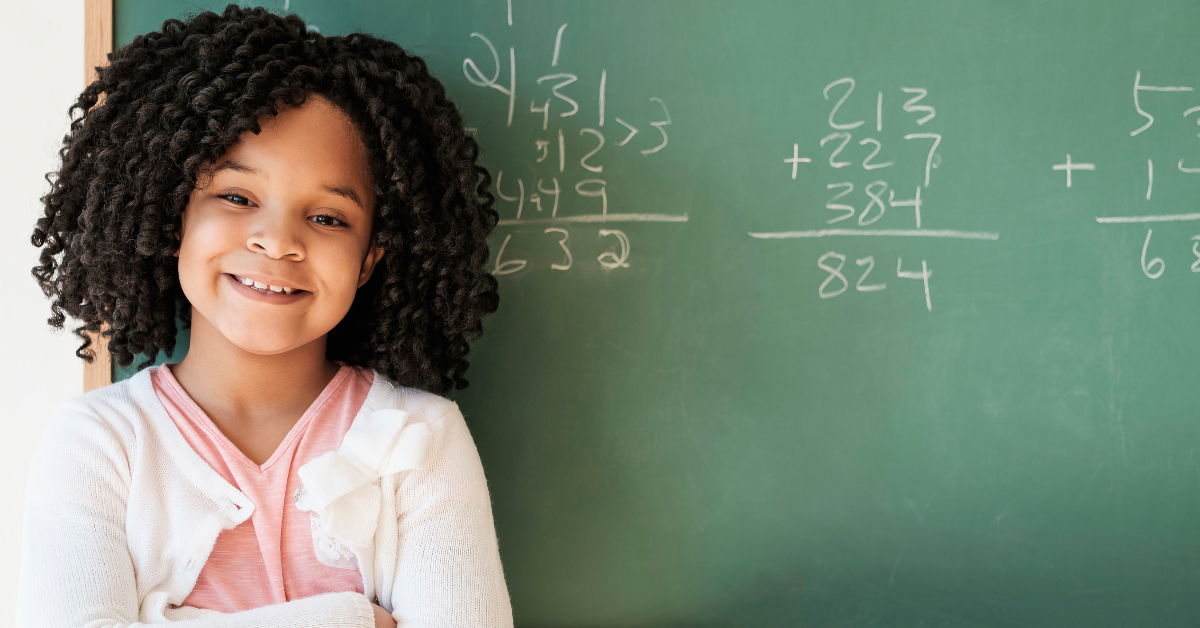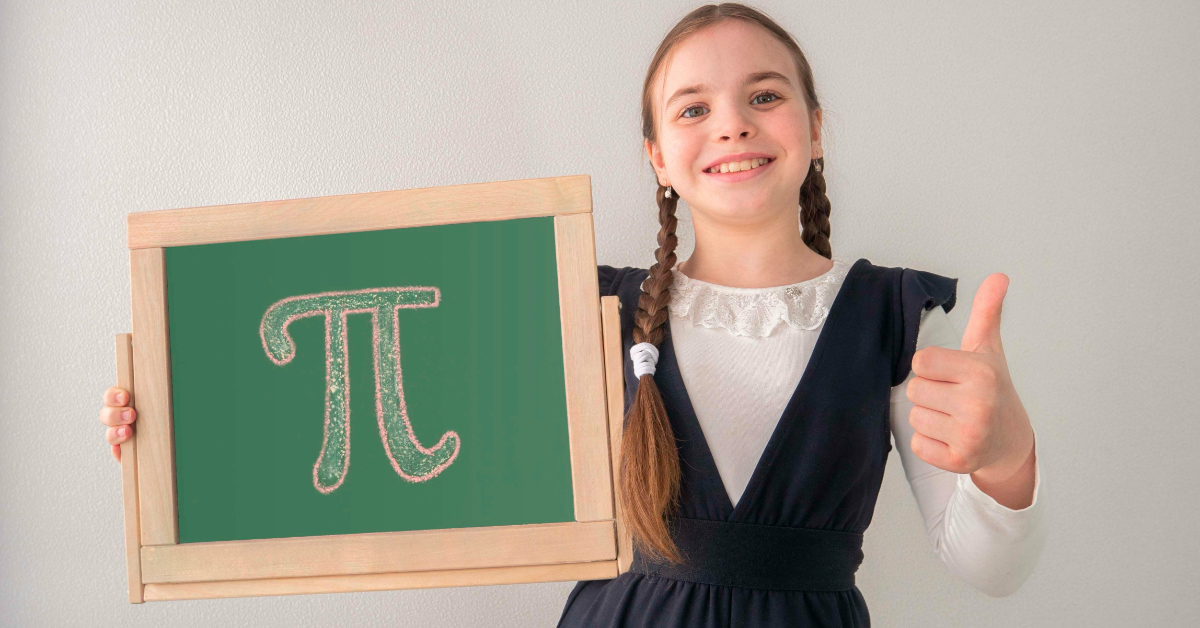
The concept of mastery learning—and, by extension, mastery math—has gained traction in the years since the COVID-19 pandemic and has been a proven approach to learning since the late 1960s.
Like mastery learning, mastery math is an approach to math education that emphasizes a deep understanding of each new idea before proceeding to the next one. It is particularly well suited for homeschooling, where students typically receive a more individualized academic program.
The mastery concept contrasts with the incremental (or spiral) approach implemented by many programs. The main difference between the two is how they approach introducing and reinforcing mathematical concepts.
The spiral approach introduces a broad range of mathematical ideas over a short period of time and revisits them periodically with increasing complexity. While math memorization isn’t the sole focus of a spiral-based curriculum, as a rote learning tool, it is part of the broader strategy.
Both approaches have pros and cons, but at Demme Learning, we embrace mastery math and offer many products based on its principles.
Examining Mastery vs. Memorization
There is a difference between learning and memorization. When it comes to learning outcomes, it’s helpful to distinguish between mastering a concept and merely memorizing the details.
Memorization
Memorization is the simplest of the two. It doesn’t require a deep understanding of the material; it only requires repetition and recall. With rote memorization, for example, a student doesn’t need to know that two groups of two add up to four; they just need to know that 2×2=4.
Mastery
Mastery of concepts is much subtler and harder to define. Students who have mastered a math concept have a clear idea of how it works and how it relates to other concepts. Once they have a deeper understanding of the concept or problem, they can draw conclusions and make inferences on their own.
A concept that has been mastered becomes dynamic in the learner’s mind. Once mastered, the foundational material can be applied to various situations, leading to more natural curiosity and a desire to build upon the foundational concepts. On the other hand, information learned through memorization tends to stay fixed since memorization is the ultimate goal.
While mastery learning provides a deeper proficiency for math ideas, this shouldn’t be taken as an outright dismissal of memorization altogether. In fact, memorization can be useful to the mastery approach. As in the case of multiplication, once the concept is mastered, memorization can help students recognize its importance at larger scales.
In practice, checking for mastery of a concept often involves giving some sort of test that requires using the concept in different ways. Students with a mastery of math should score very highly, if not ace the test outright.
How to Cultivate a Deeper Understanding of Math Concepts
When a student has mastered a math concept, they are able to apply it in a variety of ways. For example, a student who can connect the following ideas has a good understanding of each of them:
- The area of a square
- Multiplying a number by itself
- Geometric sequence formulas
Many mathematical concepts show up regularly throughout our lives in different areas. A deep understanding of math requires recognition in both abstract and practical terms. But how can you tell if students have truly mastered a concept or whether they have simply memorized it?
To gauge whether a student has a mastery level understanding of math, start by asking “why” questions. “Why is 17 a prime number?” “Why is -1 greater than -2?”
To test for memorization, on the other hand, ask “what” questions, such as: “What is the order of operations?” “What is 8×5?”
Mastery Math in the Real World
Helping students recognize practical mathematical applications outside the classroom can improve their comprehension of concepts. Almost anything related to time, money, or distance is easy to apply.
For example, ask students to estimate how long their next family trip will take, and see if they come up with the answer by calculating distance and speed properly.
Or, have students draw pictures to demonstrate their knowledge of geometrical concepts. Regarding the practical application of math problems, the maxim “If you can see it, you can solve it” generally holds true. For example, to calculate 5 times 3, a student might draw a rectangle 5 blocks long by 3 blocks wide and then add up the total number of blocks.
Challenges of Teaching Math Memorization
Spiral-based education isn’t the only approach that utilizes memorization for math learning. There are several. Traditional math, which focuses on teaching mathematical computations and formulas, utilizes memorization heavily, as does rote learning, which also involves memorizing information through repetition. While each method has its benefits, memorization in each case can lead to challenges common to them all.
Retention
Students whose focus is primarily on memorization may forget details of the subject matter between the time they are exposed to the material and when they revisit it. This can lead to gaps in knowledge, requiring re-teaching and review, which can be time-consuming and slow down progress.
Pacing
Moving too quickly through topics may leave some students behind, especially if they are having difficulty memorizing certain concepts. Because frequency is such an important part of memorization, students with busier schedules may find less time to practice and need more individualized instruction and in-class time to catch up.
Confusion
As new topics often build on previous ones, students who fail to memorize earlier concepts may struggle more as the curriculum advances. This cumulative confusion can lead to increased frustration and decreased motivation among learners.
Comprehension
Where the focus is on math memorization rather than depth of knowledge, students may only have a shallow understanding of many topics rather than a deep understanding of a few. This can affect their ability to apply mathematical concepts in situations outside the confines of the memorized material.
Assessments
It can be difficult to effectively assess mastery with memorization as concepts are revisited and expanded upon over time. Instructors may find it challenging to gauge whether students have fully understood a topic or merely have a superficial grasp of it. In the latter case, identifying exactly where the breakdown has occurred can be tedious and time-consuming.
While memorization plays a key role in a variety of math pedagogies, including spiral, traditional, and rote learning, it also can pose significant challenges such as retention issues, pacing problems, and superficial understanding.
Why Placement and Mastery Math Go Hand-in-Hand
Placing students into the appropriate academic level based on their mastery of concepts is always preferable to placing them into programs or classes based on their age or grade level. Research has shown, as far back as 1981, that proficiency-based placement produces better outcomes.
Placement within a mastery program differs from placement within a traditional mathematical experience of grade levels and corresponding grade-level expectations. When you seek to find a placement in a mastery program, the first question to ask is, “What does your student know?”
At Demme Learning, we suggest placing students at the end of their understanding and allowing them to move forward at their own pace. We even provide online placement guides and live support to help instructors find the right level for their students.
With a mastery-based program, there is no mathematical work just for the sake of doing work. In conjunction with placement at the completion of their mastery of a concept, however, is the caveat that they should have a solid foundation every step of the way. This is why you will often see a mastery program asking questions about proficiency with fact recall.
Mastery Recall is Not Memorization
Fact recall differs from memorization in that it doesn’t require the same level of repetitive practice. It’s much more seamless. Seamless fact recall is like reading without having to sound out words. Parents often report that their students know how to solve a particular problem, but true mastery combines understanding with the ability to do it seamlessly.
Students who struggle with fact recall have difficulty remaining engaged with more complex problems and following them to their conclusions. Each time a non-proficient student has to “step out” of a problem to recall a fact, the probability of error increases when they return to the problem.
Once students can demonstrate their understanding of a particular concept with seamless fact recall, we suggest encouraging them to learn something new or allowing them to progress further on the continuum of their coursework.
Tips for Teaching Mastery Math
Teaching mathematical concepts in a mastery-based way requires patience and resourcefulness but mastery math has many benefits.
Time
Mastery learning can be time-consuming for any subject but even more so for math. If a student struggles with a particular mathematical concept, don’t be afraid to slow down the pace at which the material is covered. This can help accommodate their particular learning curve without sacrificing the integrity of the curriculum. Remember that time spent mastering concepts now will save your student time learning new concepts and recalling facts later.
Resources
Implementing a mastery-based approach to math education may require additional resources to address students’ unique learning paces. This might mean more individualized learning materials, such as remedial worksheets or textbooks, advanced problem sets, or adaptive learning software. Educators might also consider professional development resources, especially when it comes to diving into higher-level math concepts. Demme Learning’s blog has many resources available to help support you and your students.
Assessments
Continuous evaluation is a key part of mastery learning, which requires time for preparation, marking, and feedback. Knowing which type of assessment to use is also an advantage. Here are four of the most common:
- Diagnostic assessments, which are conducted before a lesson is taught to gauge prior knowledge and readiness
- Formative assessments, which monitor student performance on an ongoing basis and help determine which level a student should be in
- Normative assessments, which help indicate how a student is doing along the way
- Benchmark assessments, which are used throughout the school year to evaluate progress related to long-term goals
- Summative assessments, which evaluate students at the end of a unit and assess whether the concept has been mastered.
Pressure
It’s not unusual for students to feel pressure or frustration as they work to achieve mastery of a concept before moving on. This can be especially true if they struggle with certain concepts or are learning at a slower pace than their peers. These feelings can be overcome by remembering that it is okay to move at your student’s pace, celebrating small successes, and providing lots of feedback and support to help them along. Reinforcing the value of effort and perseverance can help students approach the material more confidently and eventually help them attain mastery of the material.
Memorization vs. Understanding
When it comes to choosing mastery teaching or memorization in math education, the choice ultimately hinges on desired outcomes and the students’ individual needs. Mastery learning offers students deep conceptual understanding and the ability to apply knowledge in various contexts, while memorization can provide quick recall but may fail to help them retain information over the long term.
As an instructor, it can be difficult to determine which approach is best, but when the goal is to equip students with the mathematical understanding and skills necessary to succeed in an increasingly complex world, mastery-based learning will always provide more well-rounded outcomes than memorization alone
Ready to begin your journey toward math mastery? Check out the best mastery math curriculum, Math-U-See. It is based on a distinctive set of manipulatives that give students concrete, tangible experiences with mathematical ideas. It works well within the mastery math framework, as students who can connect mathematical ideas to physical operations will have a better sense of how they work.




Leave a Reply